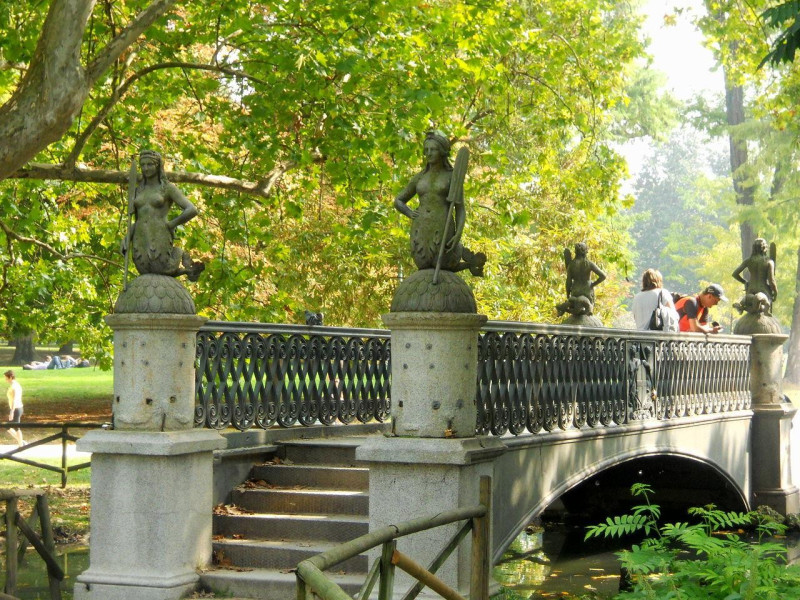Parco Sempione
Sempione Park was built in the late nineteenth century on the former parade ground, where once stretched the park Visconti called "Barcho", near the Castello Sforzesco, covering an area of 386.000 square meters. With the fall of the Sforza, the Park was abandoned and used for agriculture. In the Napoleonic era parade was transformed into a large lawn for civic uses, bordered on the north-east from the Arena and the north-west from the Arch of Peace, the start point of the axis of the Simplon. The whole area was destined to garden only after the Unification of Italy: the Park was built between 1888 and 1894 by architect Emilio Alemagna, which provided avenues passable by cars, a pond and a lookout. Over the years, numerous projects have alternated reset the area, among which include the extension of Porcinai and Viganò, the pedestrianization of some sections and the redevelopment of the surrounding areas. The Park has always been distinguished for its centrality in the life of the city and its connection with the art, as the seat of numerous exhibitions. Within Sempione Park are: the Palace of Art, the Civic Arena, the Civic Aquarium, the Tower Littoria (now Branca Tower) and the Library; between the sculptures, the equestrian statue of Napoleon III, and the works of Francis Barzaghi "Earth History", by Antonio Paradiso, "Musical Collection" by Armand Pierre Fernandez, the "Mysterious Baths" by Giorgio De Chirico and the "Bridge mermaids "by Francesco Tettamanzi. The park offers two educational tours for the observation of its rich botanical heritage: noteworthy are an old elm monumental, a horse chestnut, two large nuts Caucasus, several varieties of cedar, groups of oaks and red maples, black alder , ginkgo and sweet gum. Between 1999 and 2003 the vegetation is enriched with decorative shrubs.
Info:
Partially wheelchair accessible.
And 'possible access to eight "trails" equipped, a basketball court and a volleyball court, children's play area and four "areas dogs".



